Welcome to our informative blog on “Profitable Pig Breeds: Selecting and Breeding for Success.” As an expert in the field, we are thrilled to share essential insights to guide you towards a successful pig farming venture. Choosing the right pig breeds is crucial for maximizing profitability and ensuring sustainable growth. In this concise yet comprehensive guide, we’ll explore key factors to consider when selecting profitable pig breeds and delve into effective breeding techniques that guarantee success.
Profitable Pig Breeds: An Overview
Selecting the right pig breed is crucial for profitability and success in the pig farming industry. Some popular breeds include Hampshire, Large White Yorkshire, Duroc, Landrace, Pietrain, Berkshire, Tamworth, and Mangalica. Hampshire is known for high meat production, Large White Yorkshire is exotic, Duroc is fast-growing, Landrace is suitable for indoor farming, Pietrain is lean, Berkshire is high-quality marbling, Tamworth is hardy, and Mangalica is unique. Choosing the right breed is essential for a successful and profitable pig farming venture.
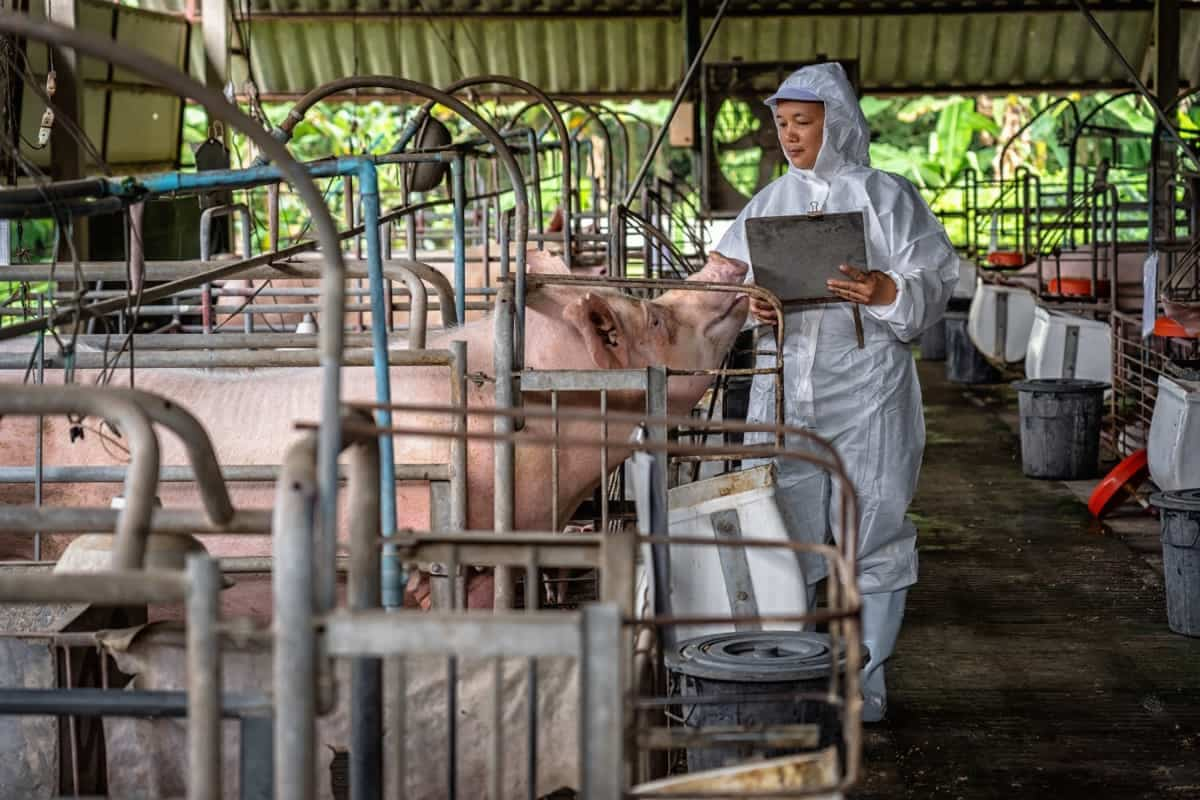
Key Considerations While Selecting Profitable Pig Breeds
- Purpose: Define your farming objectives, whether it’s meat production, breeding, or specialty pork products.
- Climate: Consider breeds adapted to your region’s climate, ensuring better health and growth.
- Feed Efficiency: Opt for breeds with efficient feed conversion to minimize costs and maximize gains.
- Growth Rate: Faster-growing breeds lead to quicker returns on investment.
- Mothering Abilities: Evaluate maternal instincts, as good mothering ensures healthier litters.
- Disease Resistance: Choose breeds known for their resilience to common pig diseases.
- Space and Housing: Select breeds that fit well within your available space and housing facilities.
- Market Demand: Research the demand for specific pork products associated with each breed.
- Market Value: Some breeds command higher prices due to their premium meat quality.
- Cross-breeding Potential: Explore breeds suitable for cross-breeding to achieve desired traits.
- Management Expertise: Assess your knowledge and experience in handling specific breeds.
- Budget and Resources: Determine the affordability of purchasing and maintaining the chosen breeds.
Best Pig Breeds for Profitable Farming
- Large White Yorkshire: This exotic British breed is popular worldwide for its large size, fast growth, and suitability for cross-breeding.
- Duroc: Hailing from the United States, Durocs are renowned for their efficient feed conversion, making them ideal for commercial pig farming.
- Landrace: Originally from Denmark, Landrace pigs are favored for their mothering abilities and adaptability to indoor farming.
- Pietrain: A Belgian breed, Pietrains are known for their lean meat and muscular build, resulting in higher meat yield.
- Berkshire: Originally from England, Berkshires are highly prized for their marbling and are popular among chefs and consumers who want top-quality pork.
- Hampshire: Originating from the United States, Hampshire pigs are prized for their high meat production and excellent feed conversion rates.
In case you missed it: Hampshire Pig Facts: Origin, Size, Physical Characteristics, Pros, and Cons
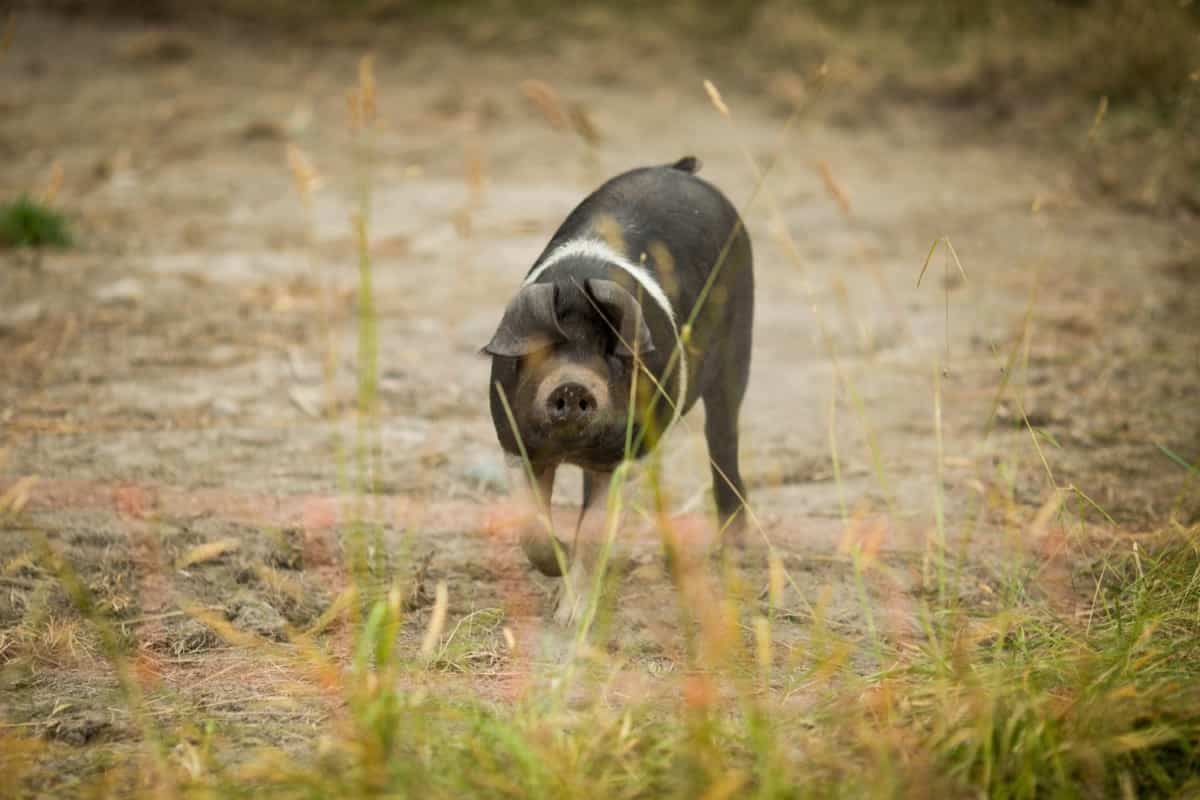
- Tamworth: A British breed, Tamworths are hardy and efficient foragers, making them suitable for free-range systems.
- Mangalica: Hailing from Hungary, Mangalicas are distinctive for their woolly appearance, excellent marbling, and premium taste.
- Wessex Saddleback: Originating from England, Wessex Saddlebacks are known for their hardiness and ability to thrive in extensive farming systems.
- Meishan: Originally from China, Meishans are valued for their prolific breeding, high-quality meat, and good temperament.
- Ghungroo: A rare Indian breed, Ghungroo pigs are indigenous to the Gujarat region, known for their hardiness and suitability for local conditions.
- Ghori: Another Indian breed, Ghori pigs are native to Rajasthan, prized for their adaptability to arid climates and high meat quality.
- Krishna Valley: An Indian breed from Maharashtra, Krishna Valley pigs are known for their fast growth and good meat-to-fat ratio.
- Saddleback: Originating from England, Saddlebacks are renowned for their distinctive black-and-white coloring and outdoor foraging abilities.
- Middle White: A British breed, Middle Whites are suitable for indoor and outdoor farming, known for their docile nature and good meat quality.
Profitable Pig Breeds: Traits and Characteristic
Large White Yorkshire
- Weight: Mature boars: 300-350 kg, Mature sows: 250-300 kg
- Uses: Ideal for cross-breeding and commercial pig farming.
- Characteristics: Large, white-colored, erect ears and a straight profile.
Duroc
- Weight: Mature boars: 300-350 kg, Mature sows: 225-275 kg.
- Uses: Efficient feed converters, popular for meat production.
- Characteristics: Reddish-brown color, drooping ears, and a slightly dished face.
In case you missed it: Large White Pig Facts: Origin, Size, Physical Characteristics, Pros, and Cons
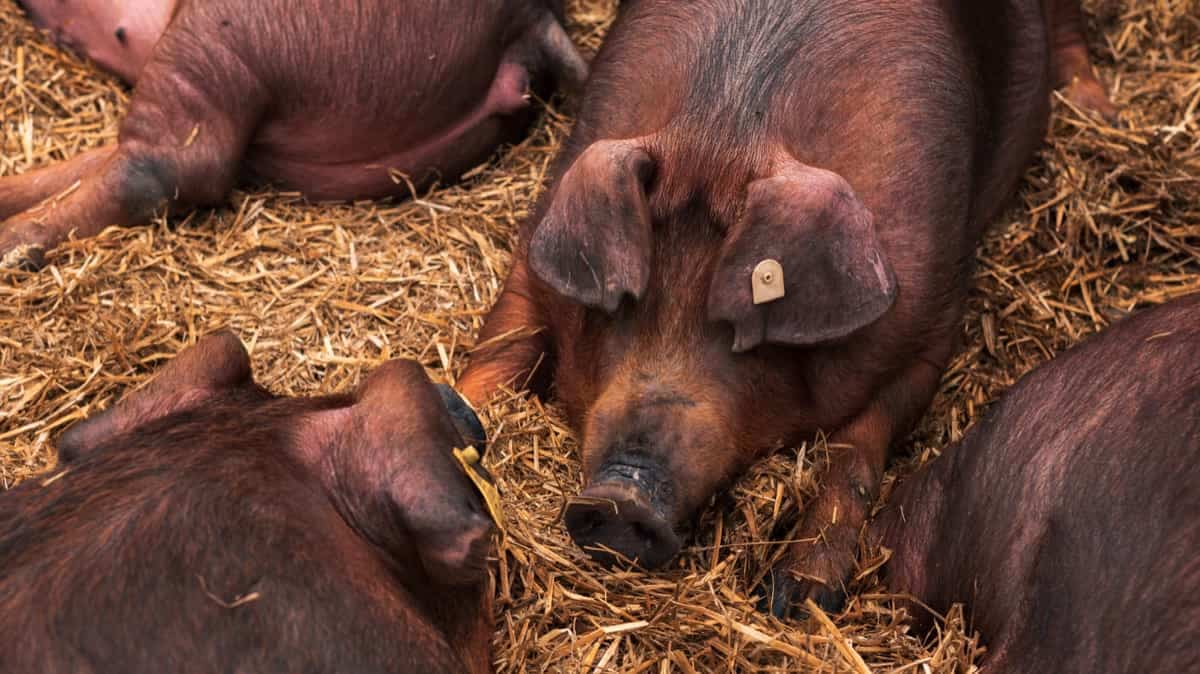
Pietrain
- Weight: Mature boars: 300-350 kg, Mature sows: 250-300 kg.
- Uses: Known for lean meat and high muscular development.
- Characteristics: Spotted black and white color pattern, with a short snout.
Berkshire
- Weight: Mature boars: 350-450 kg, Mature sows: 250-350 kg.
- Uses: Premium pork quality, popular among chefs and consumers.
- Characteristics: Black with white points on the nose, feet, and tail.
Tamworth
- Weight: Mature boars: 275-350 kg, Mature sows: 200-300 kg.
- Uses: Hardy and efficient foragers, suitable for free-range systems.
- Characteristics: Reddish-gold color, upright ears, and long snout.
Mangalica
- Weight: Mature boars: 250-350 kg, Mature sows: 200-300 kg.
- Uses: Premium meat quality, known for marbling and flavor.
- Characteristics: Curly, woolly coat, available in various colors.
Wessex Saddleback
- Weight: Mature boars: 250-300 kg, Mature sows: 200-250 kg.
- Uses: Well-adapted to extensive farming systems.
- Characteristics: Black with a white saddle-shaped marking on the back.
Ghori
- Weight: Mature boars: 100-150 kg, Mature sows: 80-120 kg.
- Uses: Indigenous Indian breed, adapted to arid climates.
- Characteristics: White with black spots, straight profile, and medium-sized ears.
Krishna Valley
- Weight: Mature boars: 100-150 kg, Mature sows: 80-120 kg.
- Uses: Fast growth and good meat-to-fat ratio.
- Characteristics: White with black spots, straight profile, and medium-sized ears.
Saddleback
- Weight: Mature boars: 250-300 kg, Mature sows: 200-250 kg.
- Uses: Suitable for both indoor and outdoor farming.
- Characteristics: Black with a white saddle-shaped marking on the back and white legs.
Landrace
- Weight: Mature boars: 300-400 kg, Mature sows: 200-300 kg
- Uses: Good maternal instincts, suitable for indoor farming.
- Characteristics: Long body, white color, and long, straight snout.
In case you missed it: Pietrain Pig Facts: Origin, Size, Physical Characteristics, Pros, and Cons
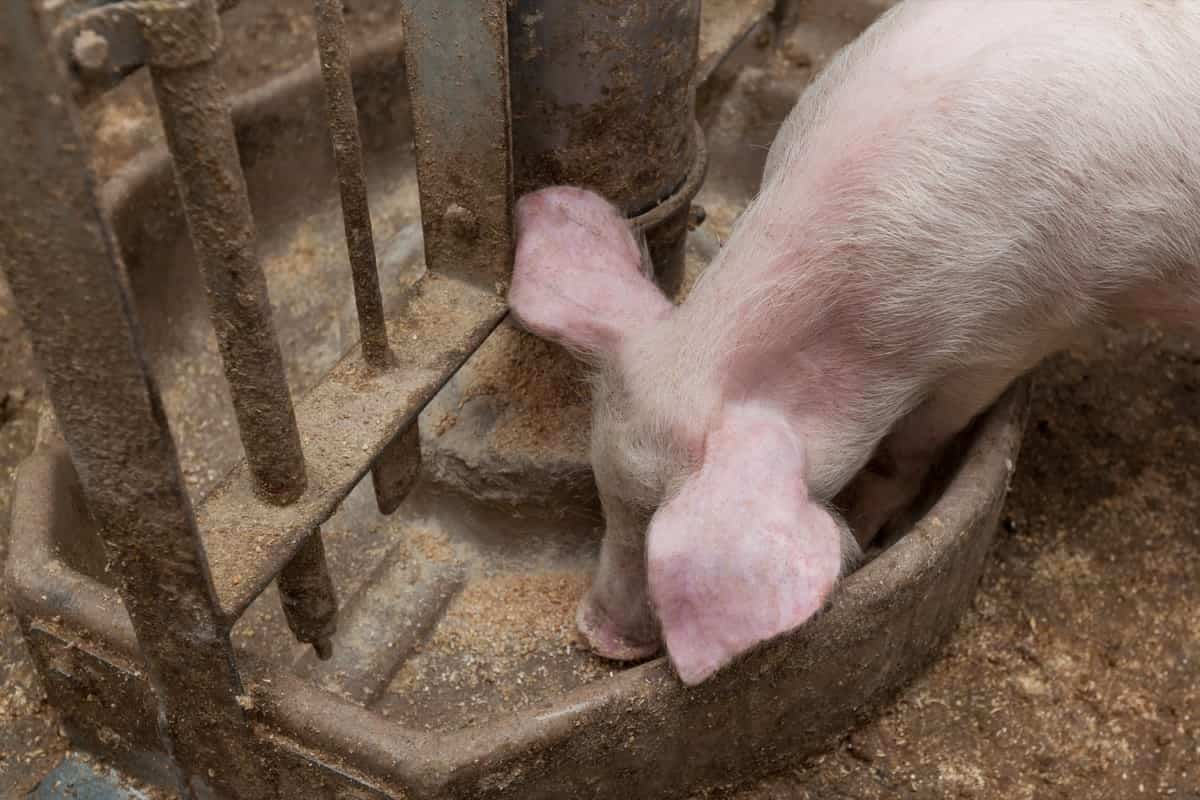
Middle White
- Weight: Mature boars: 250-300 kg, Mature sows: 200-250 kg
- Uses: Docile nature and good meat quality.
- Characteristics: White color, short snout, and small erect ears.
Hampshire
- Weight: Mature boars: 400-600 kg, Mature sows: 300-500 kg
- Uses: Excellent meat production and feed conversion rates.
- Characteristics: Black with a white belt around the shoulders and forelegs.
Meishan
- Weight: Mature boars: 200-300 kg, Mature sows: 150-250 kg.
- Uses: Prolific breeding and high-quality meat.
- Characteristics: Wrinkled face, floppy ears, and drooping lips.
Ghungroo
- Weight: Mature boars: 100-150 kg, Mature sows: 80-120 kg.
- Uses: Indigenous Indian breed, well-suited to local conditions.
- Characteristics: Black with white markings, erect ears, and a short snout.
Maximizing Profitability Through Pig Breeding
Maximize profitability in pig breeding by selecting high-performing breeds with efficient feed conversion and fast growth rates. Implement breeding strategies to improve meat quality and reproductive performance. Monitor key metrics like weight gain, litter size, and feed efficiency for informed breeding decisions. Proper nutrition, health management, and housing conditions are essential for optimizing pig health and productivity.
In case you missed it: The Sustainable Solution: Bio-composting with Agricultural By-products
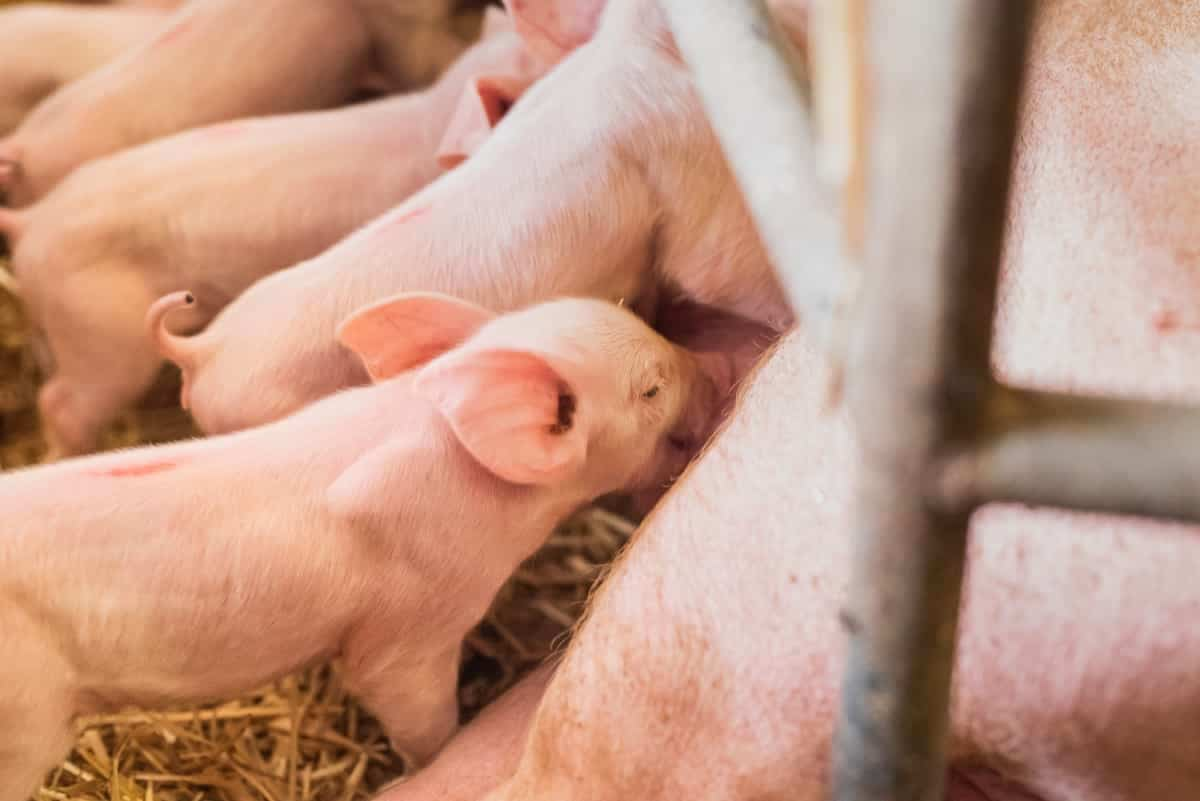
Top Pig Breeds for Commercial Success
Breeds like Large White Yorkshire, Duroc, and Landrace are renowned for their high meat production and efficient feed conversion rates, making them top choices for commercial pig farming ventures. Berkshire and Mangalica are favored by consumers and chefs alike for their premium meat quality, offering an opportunity for higher market value. Selecting these top pig breeds aligns with achieving sustainable profits and success in the competitive pig farming industry.
Choosing Profitable Pig Breeds: Expert Tips
To choose profitable pig breeds, consider farming goals, market demands, climate, resources, and desired end products. Consult experienced breeders and agricultural experts for insights. Focus on breeds with adaptability, disease resistance, and reproductive performance. Analyze market trends and consumer preferences to ensure they align with current demands. By making informed decisions, farmers can improve profitability and long-term success.
Breeding Profitable Pigs: Best Practices
- Set clear breeding objectives and prioritize traits that align with profitability, such as fast growth, efficient feed conversion, and high-quality meat production.
- Choose high-quality breeding stock, considering lineage, performance records, and physical characteristics.
- Implement controlled mating to pass desirable traits to offspring, improving genetic progress.
- Monitor reproductive performance, cull unproductive animals, maintain optimal nutrition, manage breeding soundness, practice proper heat detection, and consider Artificial insemination to enhance desired traits and reduce the risk of diseases through natural mating.
Profitable Pig Breeds in India
Breeds like Ghungroo and Ghori are indigenous breeds well-suited to local conditions, while Yorkshire and Duroc are popular choices for commercial pig farming. Local Indian breeds like Krishna Valley and Tamworth also offer potential profitability. Selecting the right breed requires carefully evaluating local climate, market demand, and farming objectives.
Breeding for Success: Profitable Pig Farming Strategies
Achieving success in profitable pig farming involves adopting effective strategies and practices. Focus on selecting breeds known for high meat production, feed efficiency, and disease resistance. Implement efficient herd management, including proper nutrition, health monitoring, and housing conditions. Engage in strategic breeding programs to improve desirable traits and enhance overall herd productivity. Regularly assess and optimize farming practices to minimize costs and maximize profits.
Market Demand and Trends
The demand for profitable pig breeds remains high in the market. Potential earnings can be significant considering the initial investment of Rs 5,57,000 for starting a pig farming business. For instance, five bores of 60kg in one year selling 600 kg of pork at Rs 300 per kg can yield Rs 1,80,000 in one year. Additionally, selling specific pork products to processing companies can provide extra income.
Improving Profitability with Selective Pig Breeding
Choosing breeding stock with desirable traits to enhance overall herd productivity. By focusing on specific characteristics such as fast growth, efficient feed conversion, and high-quality meat production, farmers can optimize genetic progress. Implementing controlled mating and utilizing artificial insemination further promotes superior genetics.
Culling unproductive animals and maintaining proper nutrition and health management support successful breeding outcomes. Selective pig breeding leads to improved herd performance, reduced production costs, and higher-quality meat, ultimately driving greater profitability.
Selecting the Right Breeds
Pig profitability is influenced by factors such as the rate at which a pig reaches market weight and the prolificity of breeding. For a profitable business, focusing on commercial pig breeds is essential, as they produce high-quality meat half the time as slower-growing heritage breeds. Commercial pig breeds can produce twice as much meat with less feeding expense. Additionally, it is important to consider a breed’s average litter size and mothering abilities.
A sustainable operation with sows can be more profitable than purchasing weaned piglets from someone else in the long run. Litter sizes among breeds can vary greatly, with some having an average litter size of 5-7 piglets while others produce 15 or more per pregnancy. The more piglets a breed can grow out, the more profit you should expect to make.
Berkshire pigs are known for their high-quality meat, known as “Kobe beef” in the pork industry. They are the more sought-after pork worldwide, known for their best tender, marbled, and flavorful meat. Berkshires take approximately 6-6.5 months to reach market weight, and their average litter size is slightly smaller than average prolific breeds, at nine piglets per parity.
Subsidies and Loans Available for Commercial Pig Farming in India
India’s EDEG scheme for pig development offers subsidies and loans to promote commercial pig farming. Eligible individuals meet specific criteria, such as being SC or ST or below the poverty level, and receive a credit of 56.67% and a subsidy of 33.33%. The beneficiary’s portion is estimated to be 10%, while those above the poverty line receive a 25% subsidy and 65% credit.
The maximum subsidy for commercial rearing units with three sows and one boar is around Rs. 25,000, while for pig breeding farms with 20 sows and four boars, the subsidy level is around 25%. Retail pork stores with chilling centers receive a subsidy rate of about 25% with a ceiling of about Rs. 3,000.
Pig Feed Management for Profits
Carefully planning and formulating a balanced food with essential nutrients, proteins, vitamins, and minerals ensures the best growth and health for the pigs. Utilizing cost-effective feed sources, such as grains, and kitchen waste like rotten fruits, and vegetables, helps to reduce feed expenses. Additionally, incorporating feed additives and supplements can improve feed efficiency and boost overall pig performance. Regularly monitoring feed consumption and adjusting rations according to the pigs’ growth stages further enhances profitability.
In case you missed it: Australian Yorkshire Pig Facts: Origin, Size, Physical Characteristics, Pros, and Cons
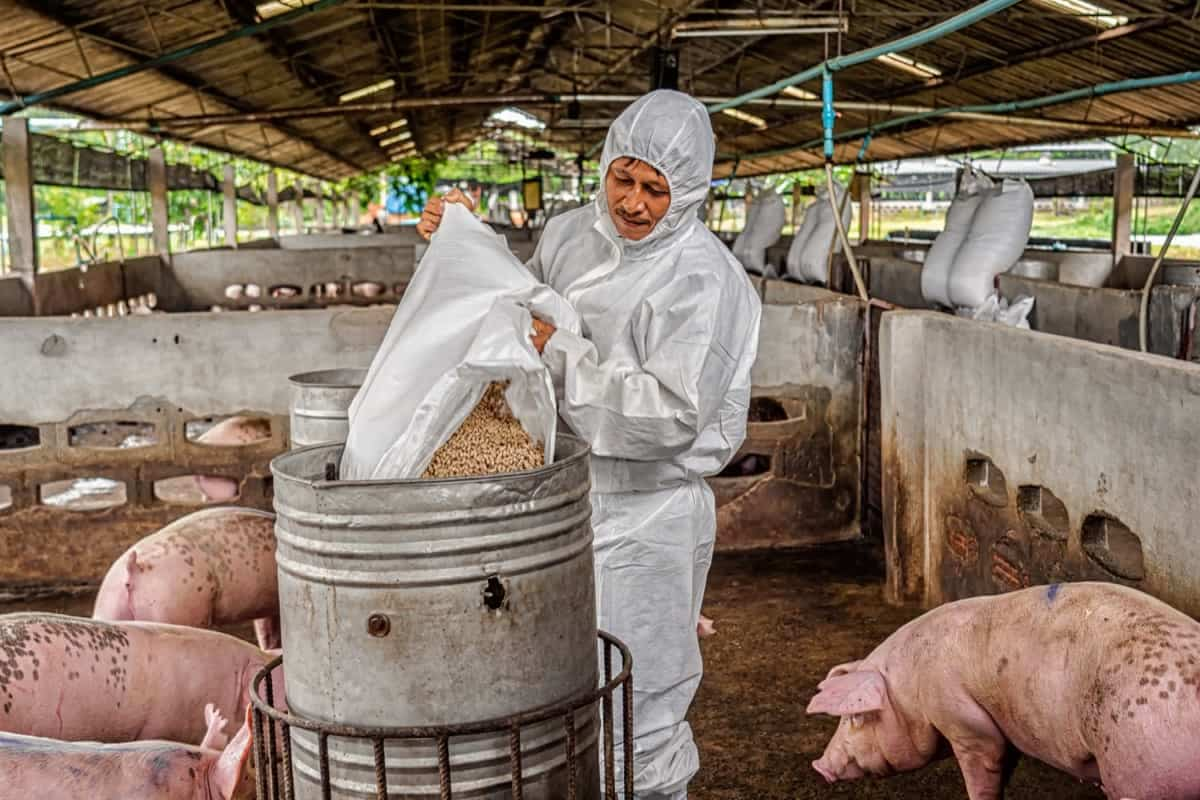
Pig House Management for Profitability
Design housing facilities for adequate space, ventilation, and temperature control to support pig health and growth. Implement strict hygiene and sanitation practices to prevent disease outbreaks and reduce veterinary expenses. Regularly inspect and maintain housing infrastructure to ensure optimal conditions for pigs.
A general guideline is 7-10 square feet per pig, depending on size and weight. Flooring materials should be durable and last longer, easy to clean, and comfortable. Common materials are concrete, slatted floors, or a combination of both. Concrete floors are sturdy and easy to clean but may require bedding for comfort. Slatted floors offer better waste management but may need rubber mats for comfort.
Conclusion
Selecting and breeding profitable pig breeds is a key factor in the success of pig farming. Farmers can maximize profitability and ensure a thriving and sustainable pig breeding operation by prioritizing traits such as efficient feed conversion and meat quality.
- Types of Pesticides Used in Agriculture: A Beginner’s Guide
- Economical Aquaculture: A Guide to Low-Budget Fish Farming
- 15 Common Planting Errors That Can Doom Your Fruit Trees
- How to Make Houseplants Bushy: Effective Tips and Ideas
- Innovative Strategies for Boosting Coconut Pollination and Yield
- Pollination Strategies for Maximum Pumpkin Yield
- The Complete Guide to Chicken Fattening: Strategies for Maximum Growth
- Natural Solutions for Tulip Problems: 100% Effective Remedies for Leaf and Bulb-Related Issues
- Revolutionizing Citrus Preservation: Towards a Healthier, Greener Future
- Natural Solutions for Peony Leaf and Flower Problems: 100% Effective Remedies
- Maximizing Profits with Avocado Contract Farming in India: A Comprehensive Guide
- Natural Solutions for Hydrangea Problems: 100% Effective Remedies for Leaf and Flowers
- The Ultimate Guide to Choosing the Perfect Foliage Friend: Bringing Life Indoors
- From Sunlight to Sustainability: 15 Ways to Use Solar Technology in Agriculture
- The Ultimate Guide to Dong Tao Chicken: Exploring from History to Raising
- The Eco-Friendly Makeover: How to Convert Your Unused Swimming Pool into a Fish Pond
- Mastering the Art of Delaware Chicken Farming: Essentials for Healthy Backyard Flocks
- 20 Best Homemade Fertilizers for Money Plant: DIY Recipes and Application Methods
- How to Craft a Comprehensive Free-Range Chicken Farming Business Plan
- Brighten Your Flock: Raising Easter Egger Chickens for Beauty and Bounty
- How to Optimize Your Poultry Egg Farm Business Plan with These Strategies
- Subsidy for Spirulina Cultivation: How Indian Government Schemes Encouraging Spirulina Farmers
- Ultimate Guide to Raising Dominique Chickens: Breeding, Feeding, Egg-Production, and Care
- Mastering the Art of Raising Jersey Giant Chickens: Care, Feeding, and More
- Ultimate Guide to Raising Legbar Chickens: Breeding, Farming Practices, Diet, Egg-Production
- How to Raise Welsummer Chickens: A Comprehensive Guide for Beginners
- How to Protect Indoor Plants in Winter: A Comprehensive Guide
- Ultimate Guide to Grow Bag Gardening: Tips, Tricks, and Planting Ideas for Urban Gardeners
- Guide to Lotus Cultivation: How to Propagate, Plant, Grow, Care, Cost, and Profit
- Agriculture Drone Subsidy Scheme: Government Kisan Subsidy, License, and How to Apply Online
- Ultimate Guide to Raising Araucana Chickens: Breed Profile, Farming Economics, Diet, and Care
- Bringing Hydroponics to Classroom: Importance, Benefits of Learning for School Students
- Ultimate Guide to Raising Polish Chickens: Breed Profile, Farming Economics, Diet, and Care
- Ultimate Guide to Raising Australorp Chickens: Profile, Farming Economics, Egg Production, Diet, and Care
- Silkie Chicken Farming: Raising Practices, Varieties, Egg Production, Diet, and Care
- Sussex Chicken Farming: Raising Practices, Varieties, Egg Production, Diet and Care